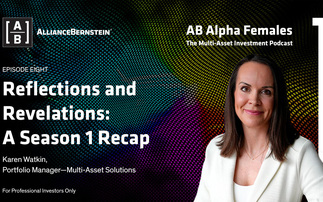The big beats in US Consumer Price Index (CPI) announced on 12 May do tell us a few things about the current economic environment; however, it does not tell us that there is a change in the secular inflation regime.
The magnitude of the beat appears shocking, but it needs to be seen in the context of the historic base effects and the unique impact of lockdowns and reopenings on current data. The leading drivers of inflation in the April inflation figure was used car prices and airline fares. These illustrate the specific idiosyncrasies of the current environment, with reopening factors (airline fares) coming back very strongly, having been exceptionally subdued as a result of the pandemic, alongside supply chain bottlenecks (used cars - semiconductor shortages disrupting new car production) causing price pressures in various sectors. Perhaps just as importantly, owners' equivalent rent (OER), a key variable watched by the US Federal Reserve (Fed), was up by 0.2% month‑on‑month (the same magnitude as last month's data), suggesting that for now at least, the stickier and less volatile/transitory components of inflation remain benign.
Inflation should be expected to rise even further in next month's figure, as the base effects from last year peak out, illustrated by the chart, which shows the year‑on‑year change in the oil price versus US CPI.
Commodity base effects matter for US CPI
Source: Bloomberg, Janus Henderson Investors, daily data from 1 January 2015 through to 12 May 2021. Forward estimates (dotted lines) to 12 May 2022. Estimates are not guaranteed.
Understanding how year‑on‑year changes in oil are likely to evolve offers a good insight into the likely direction of inflation. Of course, while the beginning of this year sees a phenomenal positive base effect, it falls off sharply into the end of the year and into 2022.
So what to draw from it all? The Fed's stance on the transitory nature of inflation at this point in time appears justified. Inflation pressures will likely lift further in the near term, before falling back later in the year.
Unfortunately, the term ‘inflation' is often used with little precision and often shorter‑term changes in price levels are described as inflation. However, for the term ‘inflation' to really qualify, the changes in price levels must be persistent through time and be broad based. Unless used car prices continue to surge at their current rate through time and airline fares continue to rise, these ‘inflationary' factors today will turn into disinflationary factors in the future.
Historically, persistent inflation has required a tight labour market and consistent wage gains to support consumption at ever higher price levels. With labour market slack still quite high we think the Fed is appropriately looking through these increases in inflation at this point in time. Should we see wage gains come through and persist and the supply chain issues that are lifting input prices to continue beyond the near term, however, then our relaxed view of the secular inflation outlook will need to be adjusted.
For now, we believe the structural drivers of low inflation of the last few decades (technology, demographics and globalisation) remain in place and subsequently the near‑term price pressures will abate to reveal ongoing low inflation pressures in the years to come.
We think the pricing of certain inflation markets looks increasingly excessive, but we are mindful that the inflation prints have not yet peaked and therefore we may have further to go in the near term. For now, higher bond yields can represent opportunities — ultimately we expect inflation expectations to fall from their current lofty levels in the medium term.
Andrew Mulliner is head of global aggregate strategies and co-manages the Global Multi-Sector Fixed Income, Global Total Return Bond and Global ex-UK Government Bond strategies at Janus Henderson Investors. Andrew joined Henderson in 2007 as an investment assistant and later became an assistant portfolio manager. Prior to this, he worked at Old Mutual plc as a junior financial analyst.
Andrew has a BSc degree in psychology from the University of Nottingham. He holds the Chartered Financial Analyst designation and has 15 years of financial industry experience.
These are the views of the author at the time of publication and may differ from the views of other individuals/teams at Janus Henderson Investors. Any securities, funds, sectors and indices mentioned within this article do not constitute or form part of any offer or solicitation to buy or sell them.
Past performance is not a guide to future performance. The value of an investment and the income from it can fall as well as rise and you may not get back the amount originally invested.
The information in this article does not qualify as an investment recommendation.
For promotional purposes.







